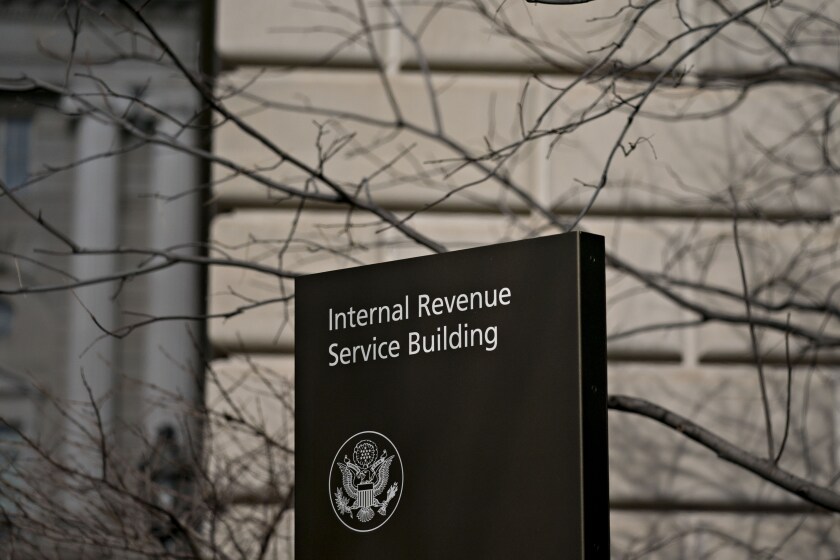Loan deferments and forbearances are surging during the coronavirus crisis, raising questions about how extensive a financial blow banks could receive in coming quarters.
Even though most crisis-related loan modifications do not have to be recorded as troubled-debt restructurings, they could substantially cut into interest income in consumer and commercial lines. Moreover, distressed loan portfolios are still expected to lead to higher loan-loss provisions in case the economy does not bounce back relatively soon.
First-quarter conference calls — starting with some of the larger banks on Tuesday — will give shareholders an initial glimpse of where things stand. The more details, the better, industry observers said.

“Investors will want as much granularity as possible on payment delays to get a sense of the initial effects,” said Kevin Fitzsimmons, an analyst at D.A. Davidson. “The ultimate impact depends on the duration of this thing, but people want to get the best glimpse they can.”
Reliable estimates of industrywide deferments are hard to come by at this point, except among mortgage lenders. Requests to delay mortgage payments increased tenfold during March, according to the Mortgage Bankers Association. Its projection was based on more than 22 million loans, or nearly 45% of the first-lien mortgage servicing market. The association did not give a precise dollar figure for the delayed payments.
"It is expected that requests will continue to skyrocket” as unemployment rises and more mortgage borrowers struggle to pay their bills, said Mike Fratantoni, the association's chief economist.
The stimulus package allows borrowers with government-backed mortgages to delay monthly payments for at least 90 days — and potentially longer. The payments must eventually be paid, likely at the end of the loan’s term or through a modified payment plan. But banks will lose out on interest income on those loans in the interim.
Similar scenarios are playing out in other consumer lines, such as auto lending, as well as in commercial real estate and business lending.
Business owners spanning loan categories, industries and geographies are asking to delay loan payments, said Chris Nichols, chief strategy officer at the $17 billion-asset CenterState Bank in Winter Haven, Fla.
Deferments and forbearances could eventually make up a tenth to a fifth of community banks’ loans in coming months, Nichols said, based on conversations that CenterState’s correspondent banking operation has had with dozens of bankers across the country.
“It’s a mad scramble out there right now,” Nichols said. “Every business is going to be impacted in some way.”
Accountants and tax professionals have been helping their small business clients deal with the economic fallout from the COVID-19 pandemic, shifting away from their routine compliance work after the end of the prolonged tax season.
Auditors should take stock of the lessons learned from the first phase of remote auditing.
The Internal Revenue Service is giving taxpayers until the end of the year before it stops its temporary procedures for faxing in Forms 1045 and 1139 for claiming tentative tax refunds.
The Paycheck Protection Program — which is trying to overcome glitches in application processing — could stem the volume of deferments, industry experts said. The Small Business Administration said on Monday that nearly 4,600 lenders participating in the program had approved about $228 billion in loans to more than 941,000 applicants.
Regulatory guidance that lets banks that implement “prudent modification programs” avoid a spike in troubled-debt restructurings should help keep credit-related costs in check. TDRs trigger an evaluation for impairment and potential increases in loan-loss allowances.
Still, repeat deferments eventually could further crimp interest income, which was already under pressure after the Federal Reserve pushed interest rates to near zero during the first quarter.
The hope is that, by providing assistance now, banks can get borrowers on a path where they will quickly resume loan payments and eventually catch up on installments missed during the pandemic, said Matthew Anderson, a managing director of bank research at Trepp.
“If you get to a point where charge-offs are piling up, then you have an even bigger impact on earnings … that would make it more difficult for banks to lend and produce new income,” Anderson said.
“There’s a cascading effect that can create a very difficult cycle,” Anderson said. “We’re all better off with credit quality mostly intact and banks able to continue lending.”
At the moment, demand for loans is extraordinarily high.
For the week that ended April 3, lending by banks increased by more than 10% from a year earlier, among the strongest weeks of growth in several years, according to Fed data. However, much of the surge was tied to a 21% increase in commercial and industrial loans after a number of businesses tapped lines of credit.
The added cash is a lifeline for some companies and, in other cases, a buffer to guard against a prolonged slump, industry observers said.
“Everything still depends on the length of this event and how severe the economic pain is during that time,” said Scott Brown, chief economist at Raymond James.
“I think, based on the public health projections for this virus starting to peak in the second quarter, we could as a country start to recover in the fourth quarter,” Brown said. “Loans now could bridge a lot of companies to that recovery.”
But, Brown cautioned, “this whole thing is unprecedented — the speed and scale are almost unimaginable. So there’s still a lot of uncertainty, and if this drags on a lot longer, loans made now could instead become charge-offs down the road.”





